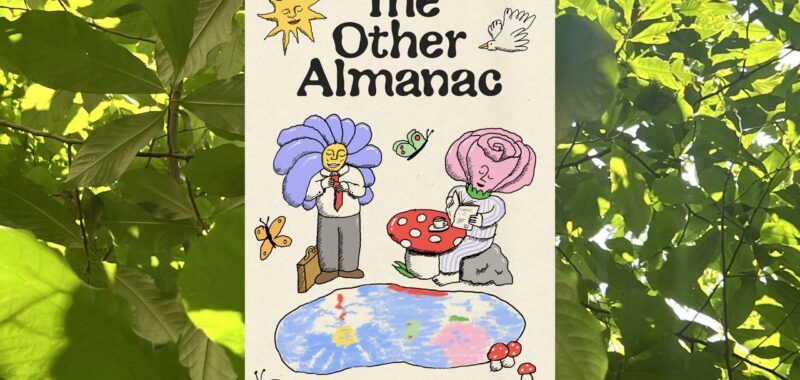Have you ever wanted to find a recipe for nettle soup, historical information about Black cowboys, sunrise and sunset times for every day of the year, gardening tips, a brief history of New York City’s undying love for the Greek coffee cup, and contemplative essays about resisting fascism, all in one place? Well, you can close all 92 of your mobile browser tabs and instead pick up a print copy of The Other Almanac, which contains all of the above and more.
Compiled and edited by Ana Ratner, a teaching artist and botany enthusiast based in Krumville, New York, and published by OR Books, The Other Almanac presents a contemporary rejuvenation of The Old Farmer’s Almanac — one of the oldest continuously published American periodicals. It was first edited and published in 1792 by Robert Bailey Thomas and remains popular for its long-range regional weather forecasts and astronomical data, planting information and recipes, and light-hearted but traditional content about cultural trends and daily tips that walk the line between ancient wisdom and superstition. Ratner’s almanac, now in its third edition, shirks the tradition of merely conveying information, instead working to bridge the gap between urban and rural communities through nature in a world that tangibly changes by the minute.

Comprised of the astronomical and seasonal data expected of a standard almanac, Ratner’s compilation is infused with artwork, text, and recipes either solicited from or submitted by a variety of contributing artists, writers, and educators across disciplines. Some of the featured artists in the latest edition include the late artist Jaune Quick-to-See Smith, Sky Hopinka, Jeffrey Gibson, Jordan Nassar, Tauba Auerbach, Jia Sung, and Day Brièrre — the last of whom will be featured on the cover of The Other Almanac‘s 2026 edition. Naomi Klein, Or Zubalsky, Sally Dewind, Spencer Tilger, and Vivien Sansour, among others, contributed written pieces ranging from poetry, essays, and personal reflections to obituaries and more.
In an email to Hyperallergic, Ratner explained that The Other Almanac isn’t meant to be consumed as a news source providing sweeping reports about climate change or other disasters, but rather a vessel for the “small, often overlooked stories of the humans, critters, plants, cityscapes and bacteria that tell the stories we aren’t already reading about.”
“Instead of a story trying to encompass the entirety of the loss and grief caused by the Los Angeles wildfires, we would be more likely to print something about the history and complexities of introduced Eucalyptus trees and how they may contribute to wildfires,” Ratner said as an example in light of the recent fires. “We like stories that speak about larger systems, ideas, or issues through personal, funny, or approachable lenses, since it’s easy to feel paralyzed by ideas of disaster or things outside of our influence.”

Poetry about Gaza and personal accounts of living through Israel’s militarism are interspersed among obituaries for extinct flora, fauna, and technology; data visualization about arctic ice sheet loss; and information about the environmentally restorative properties of the cannabis plant. Readers can page through reflections on birding in Brooklyn, monthly herbal tips and phenology notes, and a partial list of the hundreds of thousands of tons of detritus left behind on the moon (including “125 mini-moons by ‘artist’ Jeff Koons,” as the periodical recounts). The wealth of information and stories is presented in colorful, visually friendly layouts with soft edges designed by Kayley Sonheim.
“We want to be a bridge for people who may not feel that nature is accessible to them or are not sure how they fit into an urban ecosystem,” Ratner explained.
“Historically, almanacs have been wake up calls for humans to observe what’s around them, tides, flowers blooming, the moon, the colors on a caterpillar, the sounds of crickets,” she continued. “As a publication we are fundamentally optimistic, we want to engage people, get them excited to plant something, make them laugh, notice the beauty of pigeons, be creative, and try not to shame, overwhelm, or scare them away.”
For anyone with wisdom to share in the realms of journalism, non-fiction essays, and informational columns, The Other Almanac‘s 2026 call for submissions is open through March 20.
“If your submission has a unique perspective, connects seemingly unconnected things, or focuses on a niche quirky subject we will be pretty excited,” Ratner noted, adding that the publication has a huge soft spot for New York-related content.




